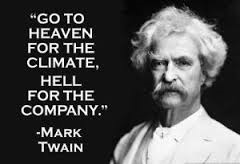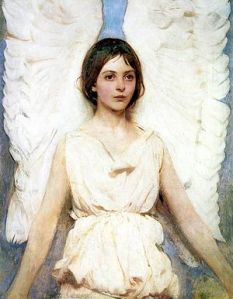 In the service of fairness I provide the following heads-up: this post isn’t necessarily light and breezy, nor is it somber or discouraging. If you read further you will encounter a few snippets of things I have read recently and what I feel are, perhaps, the natural questions which arise from them. If you are not in the mood for something to feed your brain then by all means move along; no offense meant, and certainly none intended.
In the service of fairness I provide the following heads-up: this post isn’t necessarily light and breezy, nor is it somber or discouraging. If you read further you will encounter a few snippets of things I have read recently and what I feel are, perhaps, the natural questions which arise from them. If you are not in the mood for something to feed your brain then by all means move along; no offense meant, and certainly none intended.
But, really, I consider this kind of stuff to be akin to mental peanut butter—it sticks to your brain and takes a bit of not entirely unpleasant work to fully unseat the matter at hand. If nothing else you might come away with a sense of awe, or maybe just a little conversation piece for later.
If you’re still here . . . thanks for sticking around :^)
Those who know me well enough understand that I have a quiet sort of curiosity, which, like a ceaselessly crying baby bird, constantly clamors to be fed. This doesn’t make me special or unique—it is but one facet of what makes me, well, me. To illustrate this I can tell you that when I do watch television it will most often be something like Discovery Channel, History Channel, or the Science Channel.
If I want to learn about the seedier side of human nature I’ll watch the local evening news for about ten minutes. Then I’m good for the next decade. Seriously. Try to convince me that local newscasts aren’t a downer . . . and good luck doing so.
Anyway, back to me!
Over the last couple years I have enjoyed offerings from The Teaching Company (The Great Courses); eleven of them thus far covering histroy (DUH!), meteorology, black holes, the brain, espionage, mythology, comparative religion, even basic structural engineering. I mention this because while browsing through another set of courses on sale I came across one titled The Joy Of Science (60 lectures—WOW!). While my wallet put an emphatic kibosh on ordering it, I did find the postulation at the end of the course summary intriguiing:
“Dr. Hazen also raises questions about claims that science is approaching its end—that all there is of significance to be learned about the natural world will soon be known.”
What . . . seriously?
The Holy Catholic Church knows better. Hell, they even tried to hide science in the basement like some sick, ethically impoverished parent. Okay, before someone gets offended understand that I’m talking back in the 17th century, people. The name Galileo might ring a bell.
Point being, man is far too curious to ever run out of things to explore, much too needful of knowledge. Once that has been achieved then he moves on to expression of that knowledge through such means as writing, art, or music. People of antiquity couldn’t quite understand their surroundings and events so they took to fanciful storytelling—myths, parables, fairy tales.
The First Doubter, Perhaps Also The First Scientist
At some point someone decided they’d had enough of all the hocus pocus and determined that a much closer inspection of what was behind the curtain was in order. We know the sky isn’t blue because Zeus (or God) colored it that way; it’s blue because of the way shorter wavelengths gets dispersed in the atmosphere, they are absorbed by gas and thus scattered. Longer wavelengths, like red, orange, and yellow pass straight through the atmosphere because they are largely unaffected by gas molecules . . . until the sun’s light is further down on the horizon, at which point those longer wavelengths are detected more readily by our eyes as they are bounced off particulate matter in the air, and we see a sunset.
See? The rational explanation does nothing to diminish the beauty of either and, frankly, just seems to make a whole lot more sense. Easy for me to say in the 21st century, of course.
Since I mentioned broad daylight and sunset I would be remiss if I didn’t touch on nighttime. We definitively state the night as being “dark,” right? But the explanation is a little deeper than that . . . sort of. First you must understand that all objects emit radiation. Some reflect more than they absorb, and vice versa. During the day the Earth reflects much more visible radiation—the longer wavelengths—so we can see; certainly, the Earth absorbs radiation, more than it reflects, actually. But at night, since the Earth produces negligible amounts of radiation at visible and ultraviolet wavelengths, we can’t see.
And you thought it was because we weren’t facing the sun.
The Universe As Death And Life
As of this writing I am currently (slowly) reading Charles Pellegrino’s Ghosts of Vesuvius. Though controversial, I was completely awed by Last Train From Hiroshima, and when GOV was suggested to me I knew I was in for an equal treat. Pellegrino has a deftly masterful way of taking the ponderously scientific and making it accessible to the reader. His writing, in both the aforementioned books, vaporizes any fallacy that science is approaching its end game.
On page 6 of Ghosts of Vesuvius he discusses how life may have been given a chance to take hold at the most profound depths of the oceans, around volcanic vents:
I know of a world in which water emerges four times hotter than steam, but the overlying miles of ocean press down with so much force as to forbid the water to boil, though it emerges hot enough to glow.
Ever drawn your hand away from a rush of steam, like from cooked food? Then you know how hot steam can be. Now reread the above quote again.
Tell me that doesn’t stoke your imagination.
And at the end of that first chapter he makes mention of noted cosmologist Carl Sagan, who “once tried to convey time’s vastness by compressing the entire history since the Big Bang (approximately 13.7 billion years) into a single year—with Earth forming between August 15 and September 10, dinosaurs arriving just ahead of Christmas Eve, and human civilization occupying the last few seconds of December 31. By Sagan’s measure,” he writes, “we have just entered the New Year, equipped with brains and seeking to understand how we were born.”
We don’t just think about the micro-world, we are intensely curious about what lies on the other side of our atmosphere. The cycle, in an odd yet sensible way, becomes a bit less vague, perhaps a touch better understood, when you consider that the macro and micro are what brought us here. We are cosmic dust. We exist because of what came from out there.
Does that sound like science is getting ready to wrap everything up and go home for eternity? I don’t think so.
As the title suggests the book deals with volcanism and its dual role as destroyer and preserver. Matter consumed by fire becomes carbonized, thus entirely destroyed yet also preserved because it no longer is susceptible to decay. This is the case with those unfortunates who lived in Pompeii and Herculaneum. Pellegrino provides exquisite (if not horrific) examples of what transpired as Pompeei’s inhabitants attempted to escape the volcanic onslaught of Vesuvius:
At the boatyard of Herculaneum, a man on horseback was vaporized to the bone in less than two-tenths of a second. Before the nerves could even begin to transmit pain, they had ceased to exist; and as he and the horse fell, the volume of water released from their tongues and their eyes and their internal organs flashed jets of vapor into the air—where, being immeasurably cooler than the surrounding atmosphere, the jets caused the ash to condense, to crystallize instantly into clumps of fluff—adding a strange, mineral snowfall to the terrestrial din. Their tongues were charcoal and their blood had become lava snow before their bones could fall to the ground.
Not only does man want to understand volcanoes and almost everything about nature iteself, we want to understand how nature affects us. In this case, nature not only killed but preserved, both horseman and horse, if only in skeletal form, their bones left for the archeological record.
Stepping Back To See The Bigger Picture
Dr. Pellegrino takes us for a ride along a historical timeline . . . but backwards. In doing so he brings a different, very intriguing perspective to the history of Time as we know it, not just the history of homo sapiens. He begins the journey in “A.D. 1996” (Ghosts of Vesuvius was published in 2004). He uses population numbers and the construct of a human cube as a framework for imagining the sum total of humanity on Earth at a given point in time.
In this year there are nearly 100 million fewer of us than shall exist just a year later (1997), yet the mass of human flesh upon the planet weighs in at just 450 million tons. Squeezed head to head, shoulder to shoulder, we humans would form a cube barely more than a mile on a side, barely more than four times the height of the Empire State Building or the Twin Towers. And if one were to shove that cube off the edge of the continent and into the Atlantic, it would fail to raise the height of the world’s oceans by the width of a human eyelash.
Now, again, I would argue that if science (and man) were interested in strictly numbers we would stop at the population figure. But we don’t. Many nations undertake a census to understand their demographic makeup, and from that we work to understand where our populations are coming from and going to . . . then ask why, and begin a whole other course of investigation. That would be social science, every bit as inquisitive as biology, medicine, astro-physics, etc.
An interesting historical aside: This is something I did not know, something I am a bit ashamed to say given my reading and study of late 18th and early 19th century America, especially the Revolutionary War period. Pellegrino writes about the names of streets in Manhattan when the town was practically just a village. One of the streets he mentions is Cherry Street—one particular address being Number 3, Cherry Street. I did some quick research and discovered this particular location had a mansion on it which was leased by the Continental Congress in 1785 to serve as the residence for the presidents of Congress. In 1789 George Washington moved in as he began his run as our first President of the United States. Pellegrino writes “George Washington had spent a presidency at Number 3 Cherry Street, the site of America’s first White House in America’s first capitol city. Number 3 Cherry Street is fated to disappear without a trace, under the northwest foundation of the Brooklyn Bridge.”
In case you were wondering, the global population was not much over 750 million in 1789.
One of my favorite sentences thus far comes after a lengthy discourse on the makeup of stars and their behavior within galaxies and constellations, about both the violence of the stars (collapsing of gas and dust, ingredients which led to our Sun), and their beauty:
Much as our species has been made puny against the power of volcanoes, geology diminishes under the frightful majesty of the stars.
There is so much more for us to know, so much so tantalizing just beyond our grasp. We humans are many things at any given time. Nature knows so much more than we do. It remains upon us, as a species, to strike the right balance and show her the proper respect even as we pursue those same answers she withholds from us. Perhaps she does so because she knows we are not ready to know.
As for me, I cannot fathom a time when I will know all there is for me to know. For I, like you, am but stardust, and in so being am innately curious to know everything divergent and convergent within its meaning.
Fill my mind with knowledge and I shall know of power.
Give my power purpose, reason, and wisdom, and perhaps I shall ultimately understand myself.
Until that time I shall continue to be in awe of volcanoes, the heavens, and everything ethereal and physical inbetween.
Read Full Post »





 Wow moments . . . Most of us get to experience them at some point, whether through some form of service, personal epiphany, or, as in my case, interacting with a favorite author. These wow moments are launched from one extraordinary foundation: inspiration.
Wow moments . . . Most of us get to experience them at some point, whether through some form of service, personal epiphany, or, as in my case, interacting with a favorite author. These wow moments are launched from one extraordinary foundation: inspiration. This morning I happened upon an article that mentioned live streaming video of the earth from the International Space Station. So I trotted over to NASA.gov and poked around for a few minutes. Eventually I landed at NASA TV. This is the streaming video (in HD, I believe) which shows all the goings-on at our national space organization. I must have hit the programming at the right time because they were showing live video of ISS astronauts performing experiments in the space station. I could listen to the communication between Earth and the station and see the control center in Houston as it was happening.
This morning I happened upon an article that mentioned live streaming video of the earth from the International Space Station. So I trotted over to NASA.gov and poked around for a few minutes. Eventually I landed at NASA TV. This is the streaming video (in HD, I believe) which shows all the goings-on at our national space organization. I must have hit the programming at the right time because they were showing live video of ISS astronauts performing experiments in the space station. I could listen to the communication between Earth and the station and see the control center in Houston as it was happening. 






